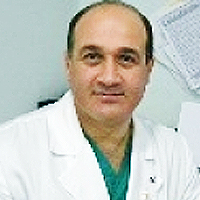The influence of HBV or HCV infections on the pregnancy course
Published on: 14th August, 2020
OCLC Number/Unique Identifier: 8667859611
The incidence of HBV infections among the pregnant in Europe falls within the range of 1% - 7%, whereas it is 1.7% - 4.3% for HCV.
The aim was to assess the course of pregnancy among women infected with HBV or HCV, and the condition of neonates in the fifth minute after the birth.
The study included 157 pregnant individuals infected with HBV, 53 infected with HCV, and 330 healthy pregnant women. None of the women infected with HBV and HCV as well as from the control group were infected with HIV, and none of them took intoxicants.
Weight of neonates delivered by healthy women was higher as compared with children born by women infected with HBV or HCV (3,517 vs. 3,347 and 3,366). The Apgar score of neonates delivered by women with HBV and HCV infections was lower as compared with the children born by healthy women (9.4 vs. 9.3 vs. 9.7; p < 0.05). Premature births occurred more often in HBV and HCV-infected women than in the control group (14.6% and 24.5% vs. 6.96%; p < 0.05). Miscarriages were significantly more common among the pregnant with HCV infections as compared with the pregnant who were healthy (9.4% vs. 1.8%; p < 0.05). In comparison with the healthy individuals, this group of patients experienced pruritus (10.5% vs. 4.2%; p < 0.05), oedemas (9.4% vs. 2.4%; p < 0.05), and hypertension (9.4% vs. 1.5%; p < 0.05) more often.
An increase in HBV loads was observed between the 6th and 28th – 32nd week of pregnancy among the infected with HBV, and then, a decrease was observed in the 6th months after the delivery.
The pregnant infected with HBV without HBsAg (-) and the infected with HCV are subject to common incidence of premature births. Women infected with HCV often experience oedemas, hypertension, and pruritus.
Exploring Environmental Neurotoxicity Assessment Using Human Stem Cell-Derived Models
Published on: 15th November, 2024
Neurotoxicity is increasingly recognized as a critical factor impacting long-term health, with growing evidence linking it to both neurodevelopmental and neurodegenerative diseases. Pesticides, widely used in agriculture and industry, have emerged as significant contributors to neurotoxic risk, given their capacity to disrupt key neurodevelopmental processes at low exposure levels. As conventional animal models present limitations in interspecies translation, human-derived neuron-based in vitro screening strategies are urgently needed to assess potential toxicants accurately. Human-induced pluripotent stem cells (hiPSCs) offer an innovative and scalable source for human-specific neuronal models that complement traditional animal-based approaches and support the development of predictive assays for neurotoxicity. Recent various stem cell models, including 2D cultures, 3D organoids, and microfluidic systems, are now available, advancing predictive neurotoxicology by simulating key aspects of human neural development and function. With the integration of High-Throughput (HT) and High-Content (HC) screening methodologies, these hiPSC-based systems enable efficient, large-scale evaluation of chemical effects on neural cells, enhancing our ability to detect early biomarkers of neurotoxic effects. Identifying early biomarkers of neurotoxic is essential to developing therapeutic interventions before irreversible damage occurs. This is particularly crucial in the context of developmental neurotoxicity, where early exposure to toxicants can have lifelong consequences. This review specifically presents an in-depth overview of the current progress in hiPSC-derived neural models and their applications in neurotoxicity testing, with a specific focus on their utility in assessing pesticide-induced neurotoxicity. Emphasizing future research priorities, we highlight the potential of these models to transform predictive toxicology, offering more human-relevant assessments and advancing the field toward a more precise evaluation of environmental neurotoxicants.
Toxic Components in Baby Care Products – A Comprehensive Review
Published on: 8th April, 2025
Background: In addition to being used to keep babies clean and comfortable, baby care products may also include hazardous substances that are harmful to the baby’s health. To safeguard the health of new-borns, it is crucial to understand the potential toxins included in baby care products.Objective: This paper focuses on the very bothering aspect of baby care products. The objective of this study is to identify and summarise the effect of toxicants present in baby care products including their source, exposure, toxicity, and adverse effects on infants.Methods: Utilizing several internet databases including various open source, including PubMed, Scopus, and research gate, a thorough literature search was carried out. The review covered articles that were written in English and published in last fifteen years. Studies reporting on the sources, effects, and potential exposure pathways of toxicants found in infant care products have been included.Result: The study deals with a list of harmful toxicants like phthalates, asbestos, parabens, heavy metals, sodium laurel sulphates, etc., and their sources and modes of exposure. Exposure to toxicants such as phthalates, asbestos, parabens, heavy metals, and sodium laurel sulphates can lead to cancer, developmental disorders, and endocrine disruption.Conclusion: It can be concluded that baby care products are having adverse effects on infants, on their skin or health, or in other ways. To avoid the same, the root cause of it should be avoided, which is the inclusion of toxicant chemicals in such baby care products. Parents and caretakers should be aware of the dangers of toxicant chemicals in baby care products and use non-toxic products to protect their babies' health, while manufacturers should use safer components. Government and authorized agencies should enforce restrictions.
















